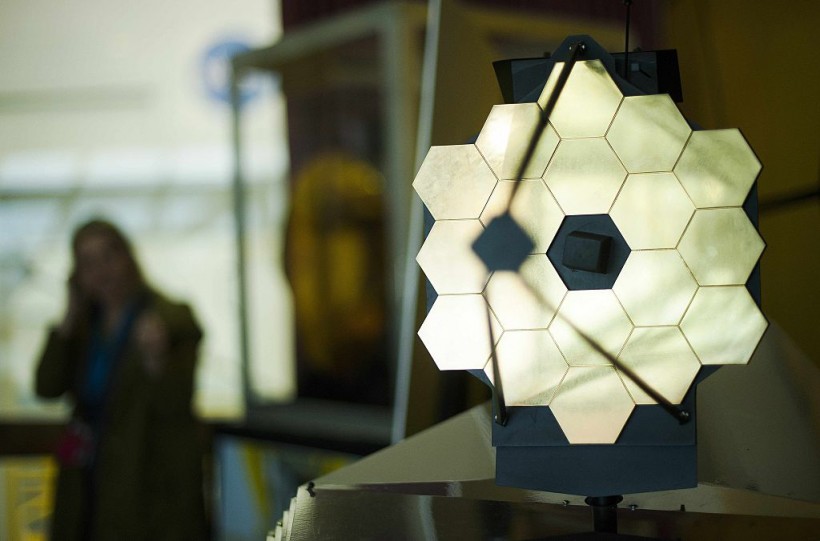With Artemis 1 and the James Webb Space Telescope in orbit, NASA acknowledges that they are observing a communications deficit.
The Artemis 1 mission is the first launch of the Space Launch System and the Orion spacecraft for NASA. Artemis is an exploration program that people and robots will lead.
With a new mission to show that the Space Launch System functions and Orion is safe to bring humans to the moon for future expeditions and even rehoming, the space agency wants to put men back on the moon after the Apollo period.
The Artemis was just launched on Nov. 16. According to its most recent update, it has already successfully entered a lunar retrograde. Current information suggests that the space shuttle may have trouble communicating in orbit.

A woman stands near a model of the James Webb Space Telescope (JWST) at NASA Goddard Space Flight Center in Greenbelt, Maryland on April 2, 2015.
NASA Sees Communication Issue With Artemis 1, James Webb Telescope
To deliver updates, space excursions require constant connection with Earth. The Orion spacecraft, the James Webb Space Telescope, and Voyager 1 are just a few of NASA's far-reaching spacecraft that are linked to the Deep Space Network, a collection of 14 antennas scattered over three locations in California, Spain, and Australia.
The communication network is reportedly congested, making it challenging to ensure that any mission beyond Earth orbit gets the necessary communications time, Space.com reported. This issue has gotten worse since the Artemis 1 mission.
The news may be unsettling for some who have been following the space mission. Still, it won't be shocking for others because Fox News reported a similar incident with Artemis 1 in November.
Along the way, the Orion shuttle captured some amazing photographs of Earth and the moon. The anomaly only became visible after it had left the moon's gravitational field. However, when the huge radio antennae were being rearranged, Houston's Johnson Space Center's NASA Mission Control Center reported lost communication with the spacecraft.
The spacecraft is still in fine shape, according to NASA, whose experts are currently investigating the incident, despite the momentary communication breakdown.
ALSO READ: NASA's Artemis 1 Orion Rocket Silently Scares Astronauts for Almost 50 Minutes
NASA Puts Blame on DSN
The communication network is reportedly congested, making it challenging to ensure that any mission beyond Earth orbit gets the necessary communications time. This issue has gotten worse since the Artemis 1 mission.
Astrophysicist Mercedes López-Morales said in the same Space.com report that Artemis would essentially take over the whole Deep Space Network since it would be necessary to follow the spacecraft when the lunar mission was launched. The main problem, according to Lopez-Morales, is that they cannot download data for that long.
However, Orion's almost continual communication with the Deep Space Network, both in flight and outside of low Earth orbit has harmed the James Webb Space Telescope and other projects. In preparation of Artemis's burden on the Deep Space Network, NASA planned modifications to specific antennas and installed two additional ones in January 2021 and March 2022. Time for contact is still scarce due to the spacecraft's communication difficulties.
RELATED ARTICLE: NASA's Artemis I Performs Lunar Flyby on the Sixth Day of Its Mission, Passing by Apollo Landing Sites
Check out more news and information on Space in Science Times.














